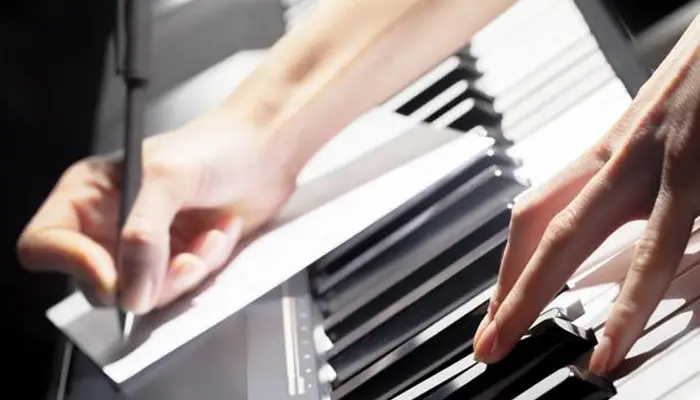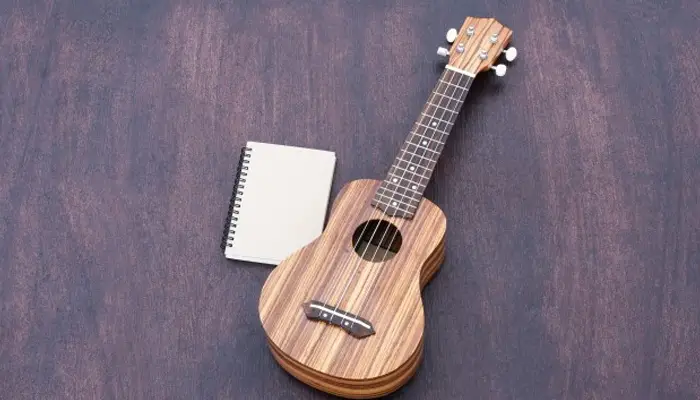
Do you know how many keys on a piano?
If you’re curious about pianos and their key configurations, you’ve come to the right place!
In this comprehensive guide, we’ll delve into the history of pianos, explore the number of keys on different types of pianos, and answer common questions related to piano keys.
- The History of the First Piano:
- How Many Keys Are on a Piano?
- Who Created the First 88-key Piano?
- Why Did Piano Manufacturers Stop at 88 Keys?
- How Many White Keys And Black Keys Are on a Piano Keyboard?
- Should I Get a 61 or 88 Key Keyboard?
- Understanding Weighted Piano Keys:
- Conclusion – How Many Keys on a Piano
- Frequently Ask Question
The History of the First Piano:
The piano, as we know it today, has a rich and fascinating history that dates back to the late 17th century in Italy. Bartolomeo Cristofori, an Italian instrument maker, is widely credited with inventing the piano around 1700.
Cristofori’s creation was a revolutionary departure from existing keyboard instruments such as the harpsichord and clavichord. His invention, initially called the “harpsichord with soft and loud,” featured a mechanism that allowed players to vary the volume of each note, giving rise to the term “pianoforte,” which means “soft-loud” in Italian.
Although Cristofori’s earliest pianos had a limited number of keys compared to modern pianos, they represented a groundbreaking advancement in musical instrument technology.
How Many Keys Are on a Piano?
One of the defining characteristics of the piano is its keyboard, which typically comprises a set of keys arranged in a specific pattern. A standard piano keyboard consists of 88 keys, encompassing both white and black keys. These keys span seven octaves, from the lowest A to the highest C, providing a wide range of musical expression.
Additionally, most pianos feature three pedals at the base, including the sustain pedal, soft pedal, and sostenuto pedal, which further enhance the instrument’s versatility and tonal capabilities.
Who Created the First 88-key Piano?
Bartolomeo Cristofori’s pioneering work laid the foundation for the development of the modern piano, including the 88-key configuration that has become the standard in today’s instruments.
Cristofori’s early pianos featured fewer keys and underwent several modifications over time, including the addition of extra keys at both ends of the keyboard to expand the instrument’s range.
By the late 18th century, pianos with 88 keys had become prevalent, offering musicians the ability to play a broader repertoire of music across multiple octaves.
Why Did Piano Manufacturers Stop at 88 Keys?
The decision to settle on 88 keys as the standard for pianos was influenced by several factors, including musical considerations and practical limitations. The range of notes covered by 88 keys encompasses the full spectrum of pitches required for most musical compositions, from the deepest bass notes to the highest treble tones.
Additionally, the physical size and design of the piano limit the number of keys that can be accommodated while still maintaining playability and ergonomics. As a result, piano manufacturers standardized the 88-key configuration, which has remained unchanged for centuries.
The number of keys on a piano has been around for centuries. The modern 88-key keyboard was introduced in the early 1800s, and it stuck because that is the number of keys found on a standard grand piano. This arrangement makes it possible to play all of the notes required in classical music literature.
How Many White Keys And Black Keys Are on a Piano Keyboard?
A traditional piano keyboard consists of 88 keys, with 52 white keys and 36 black keys. The black keys are arranged in groups of two and three, creating a repeating pattern across the keyboard.
These black keys correspond to the sharps and flats in the musical scale, allowing players to access additional notes and play in different keys.
The white keys, on the other hand, represent the natural notes of the scale, spanning the full range of musical pitches from A to G.
Should I Get a 61 or 88 Key Keyboard?
The decision between a 61-key and 88-key keyboard depends on your musical goals, repertoire, and personal preferences. While a 61-key keyboard may be sufficient for beginners or casual players, those pursuing more advanced or classical music may prefer the expanded range and versatility offered by an 88-key instrument.
Additionally, the choice between keyboard sizes may also be influenced by practical considerations such as portability and space constraints.
Understanding Weighted Piano Keys:
The keys on a piano can be divided into two categories: weighted and unweighted. Weighted keys are found on digital pianos and grand pianos, while unweighted keys are found on upright pianos.
The weight of the key affects how easily it is pressed down and how much control you have over the sound that’s produced.
Typically, grand pianos have 88 keys and weighted keys. These heavier weights give the player greater control over how loudly or softly they play a note and how fast or slow they can press it down.
Digital pianos also feature weighted keys because there are no pedals to create different sounds on an upright piano.
Conclusion – How Many Keys on a Piano
In conclusion, the piano is a remarkable instrument with a rich history and a timeless appeal. From its humble beginnings in the workshops of Bartolomeo Cristofori to the modern concert grand pianos found in concert halls around the world, the piano has captivated musicians and audiences alike for centuries.
Whether you’re a beginner exploring the basics of piano playing or an experienced pianist honing your skills, the 88 keys of the piano offer endless possibilities for musical expression and creativity.
Frequently Ask Question
How do I identify keys on a piano?
Look for the sets of black keys, usually positioned between the white keys. The pattern of black keys repeats across the keyboard, making it easy to identify different notes and intervals.
How many keys on a piano?
There are 88 weighted and unweighted keys on a grand piano, but only 52 or 54 unweighted keys on an upright piano.
What is the first note in music?
The first note in music is the A below middle C, which serves as a reference point for tuning and musical notation.
Does a piano have 12 keys?
No, a standard piano has 88 keys, providing a wide range of musical pitches and octaves for players to explore and enjoy.
That’s all! You can also check out How Many Octaves on a Piano and How Many Piano Grades Are There.



